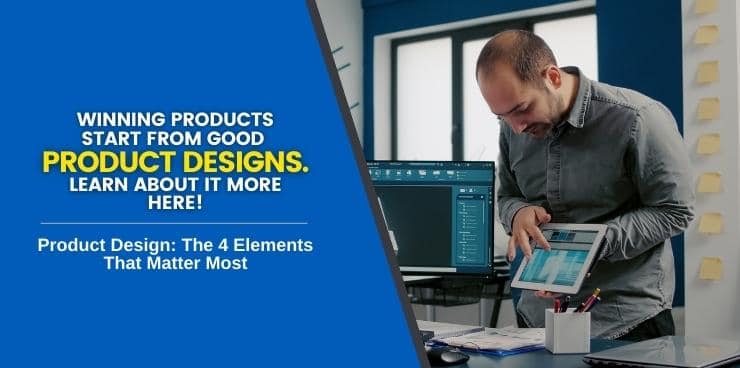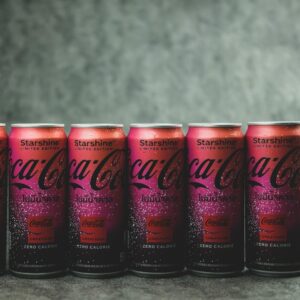Sometimes businesses get so obsessed with optimizing a product’s functionality that they overlook one equally important aspect — product design. Even if you’re selling benefit-rich and feature-dense solutions, your product design may just be the clincher that decides your customer’s buying decision.
Don’t believe me?
Let me take your imagination’s hand for a few moments:
You just bought your dream phone.
It’s the model you’ve been anticipating for months. Finally in your favorite color, the interface is so elegant, and that camera. Oof. So good.
But every time you hold it, use it, or keep it in your pocket, a thought keeps nagging you: “something’s not quite right.”
Even if you fail to articulate your concern, your unexplainable aggravation often supersedes the features and benefits you initially wanted.
THIS is why product design is so important. And if you’re an residential home service contractor, the last thing you want is a customer grumbling every time they use your product.
In this article, we’ll dive into everything you need to know about product design, so you can sell merchandise and services that have your clients in mind.
Product Design: Definition
According to the Product Plan, product design describes the process of conceptualizing, manufacturing, and iterating products that solves people’s problems.
But before we dig deeper into the design process, I believe it’s essential to re-evaluate our meaning of “product.”
In the past, we may have described products as something tangible — things you can touch. However, product and product design has now infiltrated services too, like club memberships. Wizard of Sales®, for example, are product designers who focus on optimizing a club membership’s user experience (UX). The point being? Product design has evolved to cover both the tangible and intangible.
So for a home service business owner looking to streamline your club membership offering manufacturing the right features and benefits is part of product designing. Additionally, your service can also be treated as a product. In this case, the design process is how you plan to effectively render the service.
At Wizard of Sales®, we help residential home service businesses formulate their product designs and sell their winning products. If that’s what you need, we encourage you to book a demo with us today to learn more!
Understanding the User Experience of a Product
When we talk about product design, the focus should always be on behalf of the end-user. The goal is to deliver an impeccable user experience to a point where any time your client operates the solution you installed, appreciation for your home service business comes to mind.
That’s why we designed 3 key questions for business owners to help you craft the most suitable product design based on your clientele’s needs.
Key Questions for Designers
The next time you create a product or render a service, we recommend answering the 3 questions below. This way, you know you’re providing the right user experience to your client.
1. What problem are we trying to solve?
It always begins with a problem:
- “Our house is too hot”
- “Our sink’s leaking”
- “We need weather-resistant roofing”
Your primary aim is to address whatever problem they have AND use your industry expertise to propose the best solution and uproot the problem from its core. If you specialize in chimneys, building one isn’t your sole goal. You are also considering the material being used, potential ventilation problems, the girth of the flue collar, etc.
2. Who has this problem?
While every buyer is somewhat different, a common theme runs though every solution you conceptualize. When designing a product, you must consider the size of the market that will benefit from your proposed solution. Unless there is respectable demand, don’t bother designing a new product. You must ensure profitability once you reach the market, and it’s not your job to solve all problems.
3. What do we want to achieve?
Your goal is to uproot the problem from its core. The product must not only solve the problem now but also keep it from recurring in the foreseeable future. Alternatively, prior to production, your product design should also proactively prevent any hurdles that users may potentially face.
As an HVAC contractor, installing an easy to use thermostat has greater perceptual value than a top of the line system with a clunky interface. The last thing you need are clients flooding you with questions on how to use it — or expressing their disappointment with an otherwise great solution to their friends and family.
The 4 Elements of Great Product Design
If you’re designing your own product or choosing your product selection, we’re here to help you create the ideal lineup. The 4 elements of great product design are meant to be guiding principles when designing and selecting your products and services.
 1. Product Authenticity
1. Product Authenticity
It’s no secret that a novel product is a sum total of ideas that aim to address a unique problem. Addressing an industry problem requires having a fresh take on how to solve it.
You can simply replicate an already existing solution and call it yours but that’s not authentic. If your product design isn’t a fresh solution, one workaround is to add more value to already existing solutions. This is known as bundling. Sometimes this even means removing less desirable bits that nobody values.
For example, if you’re a flooring specialist, one authentic product design may be to develop a flooring product using raw materials from a comet. Coupled with a suitable scifi product campaign, you can leverage your new product design that blows your competition out of this world.
If marketing isn’t your strong suit, it is ours. Let us take it off your plate.
2. User Experience (UX)
Another quality of a great product design is how much it caters to your users’ experience. Your aim as a business is to make life easier for your buyers. UX can be viewed from two perspectives: your business and the users.
As a residential home service business, you want to deliver products that provide a safe, intuitive, and economical experience to your clients. Home service providers are not product designers per se but you hold reins on every piece of equipment you sell and install. Identifying a good user experience may a means to a faster and more profitable sale.
The second point of view is from your users. A good user experience influences a good feeling when interacting with the system. Remember that home services are grudge purchases so working toward a straightforward, unencumbered, and affordable UX is imperative.
3. Form and Function
When selling products or services go back to the basics. What pain points do we want to solve? What features and benefits do we have that will deliver the advantages clients actually need?
Answering these questions boils down to two thing: form and function.
Consumers are attracted to durable, unique, and convenient things. That’s why designing products or services that tickle their fancy is a must. Though what really helps build a business from the ground up is the product story that fits with their actual felt needs based on the pain and pleasure points. A product or service without an optimial design will still work, but the one that has just the right suite of features (not too little, and not too many) is the one they will buy.
 4. Recognizes and Solves Customer Pain Points
4. Recognizes and Solves Customer Pain Points
Your design process must always build on your customer’s pain points. When selling an HVAC system, focus on the key elements that will soothe the actual felt needs – money, energy (stress/frustration reduction), and time.
Quality product design reinforces those advantages that satisfy a buyers driving motivations.
Essential Things To Remember in Product Design
Your product design will affect your clients differently. There is no one size fits all solution in product design. When you get really good at building and selecting products, you can employ a tactic called mass customization. This allows you to limit the selection to the tightest array of options, and bolting on the peripheral options on a case-by-case basis.
An optimized service workflow you design may work wonders today, but it may need a revamp 2 years from now. Until then, a good understanding of your audience and effective communication with your team is the key to success.
If you need advice when it comes to product design, Wizard of Sales® helps residential home service businesses formulate winning solutions. Book a call.



 1. Product Authenticity
1. Product Authenticity 4. Recognizes and Solves Customer Pain Points
4. Recognizes and Solves Customer Pain Points